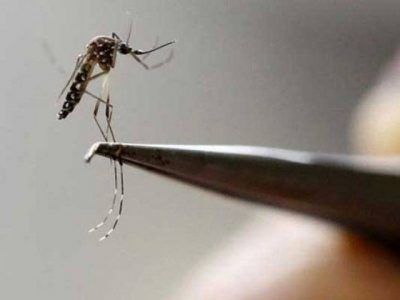- Home
- Editorial
- News
- Practice Guidelines
- Anesthesiology Guidelines
- Cancer Guidelines
- Cardiac Sciences Guidelines
- Critical Care Guidelines
- Dentistry Guidelines
- Dermatology Guidelines
- Diabetes and Endo Guidelines
- Diagnostics Guidelines
- ENT Guidelines
- Featured Practice Guidelines
- Gastroenterology Guidelines
- Geriatrics Guidelines
- Medicine Guidelines
- Nephrology Guidelines
- Neurosciences Guidelines
- Obs and Gynae Guidelines
- Ophthalmology Guidelines
- Orthopaedics Guidelines
- Paediatrics Guidelines
- Psychiatry Guidelines
- Pulmonology Guidelines
- Radiology Guidelines
- Surgery Guidelines
- Urology Guidelines
Diagnostic dilemma!! Dengue Hemorrhagic Fever presenting as Encephalitis

The case of an 18-years male patient who was diagnosed to have dengue presenting as encephalitis was reported in the Journal of Medical Case Reports.
The 18 years old patient was presented with neurological symptoms; cerebrospinal fluid analysis, electroencephalogram, and magnetic resonance imaging (MRI) showed evidence of encephalitis. Positive dengue antigen and antibody in serum and cerebrospinal fluid with the exclusion of other possible etiologies confirmed parainfectious dengue encephalitis. He was started on sodium valproate 200 mg 8 hourly and made a slow neurological recovery with mild residual weakness (grade 4+ power) in his left upper limb at 2 months with intensive supervised physiotherapy.
Dengue and encephalitis, both are arbivoral diseases common in countries with a tropical climate. Encephalitis virus is a classic example of the neurotropic virus. In contrary to this dengue virus is usually not considered to be neurotropic, even though in recent years, reports of direct central nervous system involvement in dengue has been described.
The authors of the study reported the case of a previously well 18-year-old Sri Lankan Sinhalese boy, resident of a dengue-endemic area, who presented with a 1-day history of high fever and tonic-clonic movements of the left upper and lower limbs later converting into a generalized tonic-clonic (GTC) seizure to the Teaching Hospital Peradeniya, Sri Lanka.
A general examination revealed a temperature of 38.33 ºC (101 ºF) but was otherwise unremarkable. A neurologic examination revealed the patient to be drowsy but arousable, without signs of meningism. A conscious level corresponding to the Glasgow Coma Scale (GCS) of 10/15 (E-4, V-1, M-5) was present with horizontal gaze palsy to the left, and normally reactive pupils of 3 mm. A cranial nerve examination revealed facial nerve palsy of upper motor neuron type on the left with flaccid paralysis of his left upper limb (power 0/5) and diminished left lower limb (power 2/5) power. Deep tendon reflexes were diminished on the left with hypotonia. The plantar response was extensor on the left side. No cerebellar signs were apparent.
A magnetic resonance imaging (MRI) of his brain was performed which showed abnormal high intensity subcortical white matter and cortical gray matter in right frontoparietal and temporal lobes in T2-weighted (T2W) and fluid-attenuated inversion recovery (FLAIR) images with some faint meningeal enhancement appreciated in right frontotemporal area suggestive of right-sided meningoencephalitis.
The marked rise in transaminases together with leukopenia and thrombocytopenia prompted a fresh search for an alternative diagnosis and serum dengue nonstructural protein 1 (NS1) antigen was performed which was positive. The patient was prescribed for sodium valproate 200 mg 8 hourly after which he slowly recovered with mild residual weakness (grade 4+ power) in his left upper limb at 2 months with intensive supervised physiotherapy.
Taking a cue from the case, the authors concluded that uncommon presentations of a common illness often cause diagnostic dilemmas. Hence, reporting of these presentations and knowing the epidemiologic patterns of the disease help physicians to arrive at the correct diagnosis even though they do not have sophisticated serological investigations. Overall, this can improve the quality of health care and reduce mortalities, especially in a resource-poor setup.
For reference, follow the link

Disclaimer: This site is primarily intended for healthcare professionals. Any content/information on this website does not replace the advice of medical and/or health professionals and should not be construed as medical/diagnostic advice/endorsement or prescription. Use of this site is subject to our terms of use, privacy policy, advertisement policy. © 2020 Minerva Medical Treatment Pvt Ltd